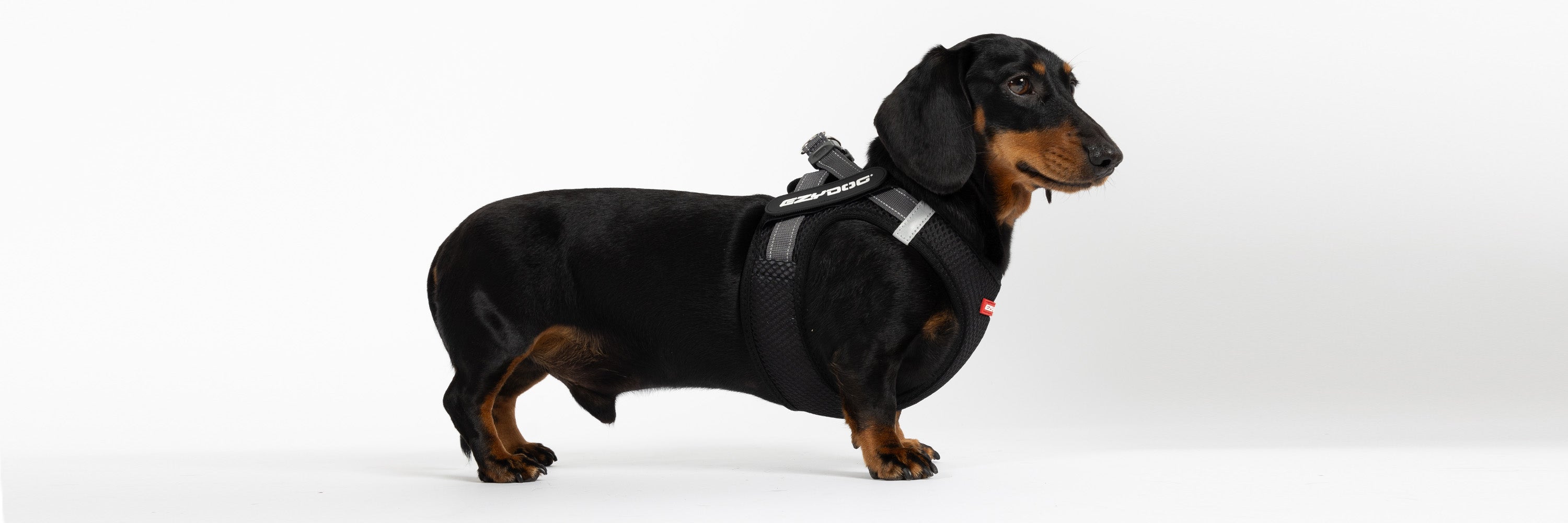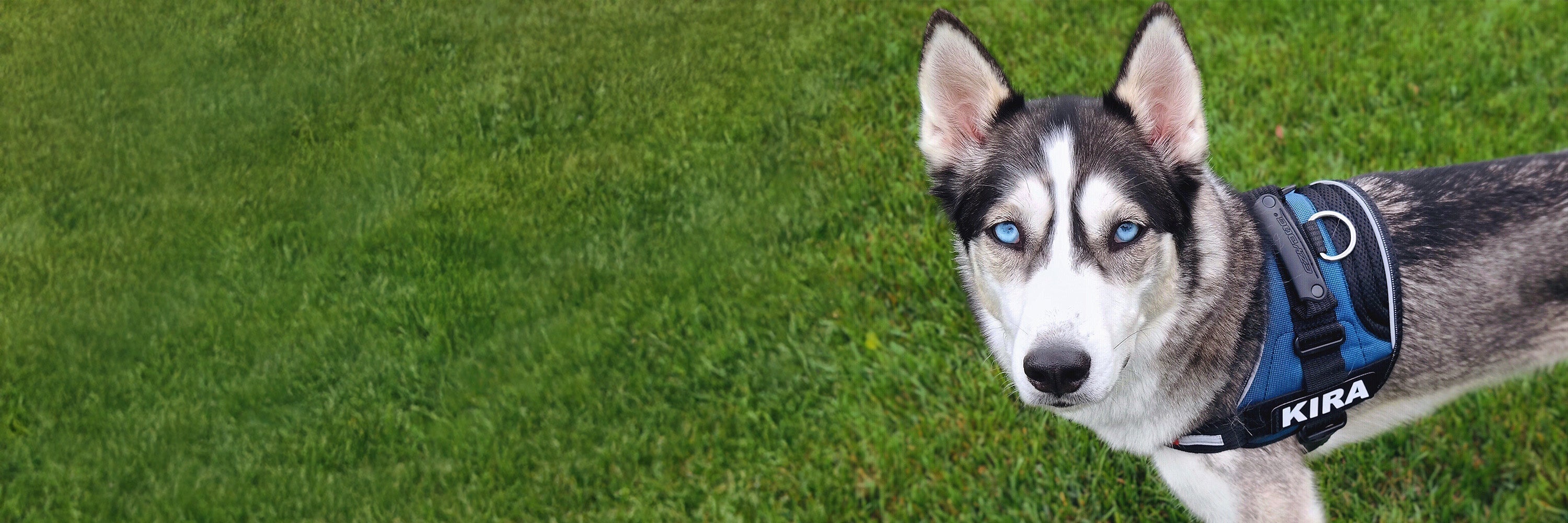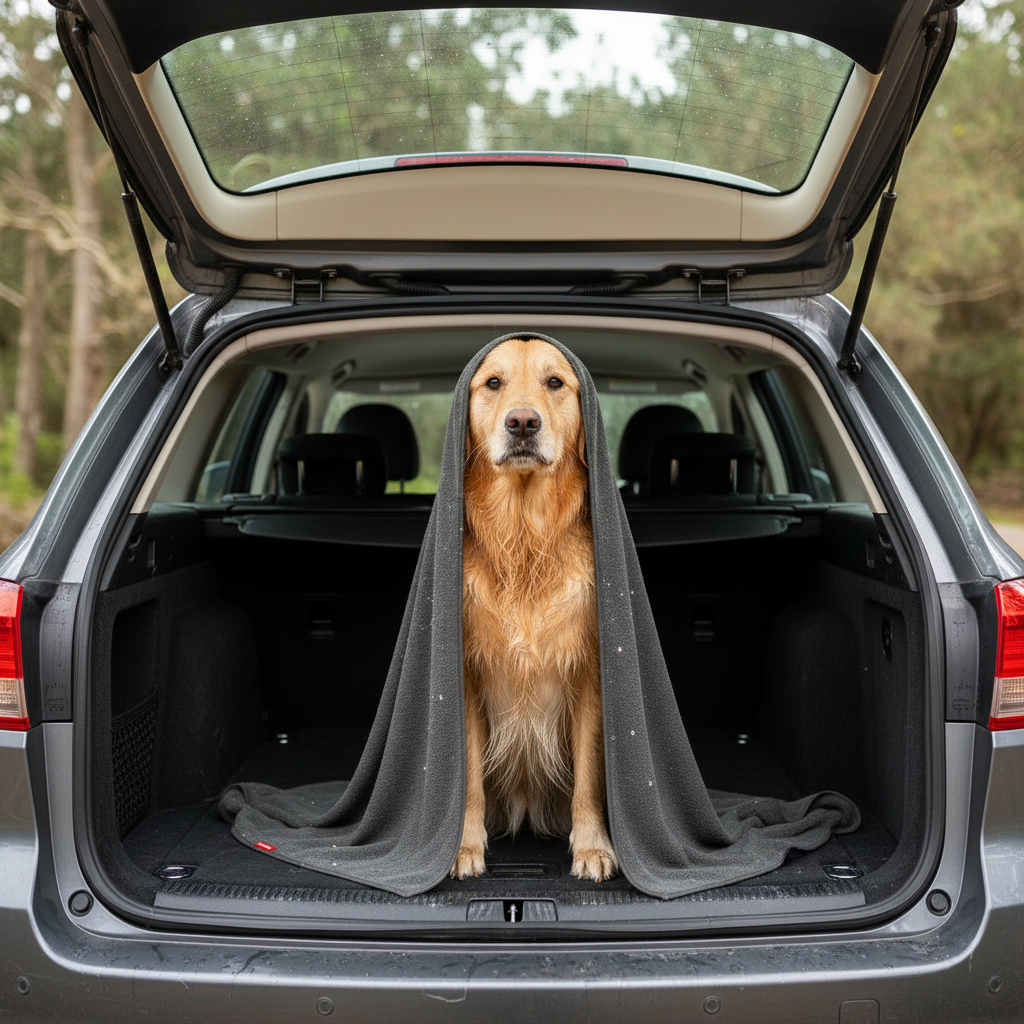
Best Dog Harness for Mini Dachshund - Comfortable & Secure Fit
As a dachshund parent, I know how tricky it can be to find the right harness. Our low‑rider friends have long backs and deep chests that make them adorable and vulnerable. They’re 10–12 times more likely to develop intervertebral disc disease (IVDD) than other breeds.
That statistic startled me when I first read it. It means that up to one in four dachshunds will experience IVDD in their lifetime. With odds like that, choosing the wrong harness isn’t just inconvenient—it can be dangerous.
After a mountain of research, I saw the same tips repeated: choose a Y‑shape, look for adjustability and avoid collars. Yet few explained why those features matter or how to fit a harness properly. This guide fills that gap and shares my own experiences, so you can make a confident choice for your mini dachshund.
Why Your Mini Dachshund Needs a Special Harness
Standard harnesses often squeeze a dachshund’s unique frame. They can dig into the armpits or slide up toward the neck. Because our pups have deep chests, narrow shoulders and long backs, they need gear that distributes pressure evenly.
The IVDD Factor
IVDD is a condition where spinal discs degenerate or rupture. Dachshunds are 10–12 times more likely to develop it than other breeds and about 19–24 % will be affected. Collars put pressure directly on the neck, which can trigger or worsen a disc problem. That’s why vets recommend harnesses for dachshunds.
Comfort Influences Behaviour
I’ve seen first‑hand how an uncomfortable harness can make a dog reluctant to walk. When I first rescued Frankie, she froze whenever I clipped on a stiff harness. Once we switched to a soft, well‑fitted Y‑shaped design, she started trotting happily again.
Collars vs. Harnesses: Protecting Your Dachshund's Delicate Spine
When you hook a lead to a collar, any pull puts pressure on the neck and trachea. For a mini dachshund with already fragile discs, that can be risky. Specialists at the Animal Medical Center warn that chondrodystrophic breeds like dachshunds should avoid collars, because neck pressure can worsen spinal injuries.
VCA Animal Hospitals also notes that harnesses wrap around the torso and place minimal pressure on delicate tissues. That means more control for you and better spinal health for your dog.
Key Features to Look For in a Mini Dachshund Harness
The Importance of a Y‑Shaped Design
A Y‑shaped harness frames your dog’s chest with a strap down the sternum and two straps that sit above the shoulder joints. This design allows natural shoulder movement and prevents compression.
Unlike H‑style or step‑in harnesses, Y‑harnesses don’t sit in the armpits. Straps that hug the armpits can chafe and alter your dog’s gait. The Y‑shape leaves room behind the front legs while still keeping your pup secure.
Adjustability Matters
No two dachshunds are alike. Puppies grow quickly, and adults vary in chest depth. Look for a harness with multiple adjustment points—around the neck, chest and belly. Experts say a good harness may require five or six adjustments to fit properly. More adjustability means a snug fit and less chance your clever sausage will wriggle out.
Soft, Padded Materials
Because dachshunds spend so much time close to the ground, their harnesses get dirty and wet. Choose breathable fabrics like neoprene or mesh with generous padding. Wider straps and cushions spread pressure over a larger area, protecting the spine.
Escape‑Proof Design
If your dachshund loves to back out of harnesses, consider designs with a secondary belly strap or a third strap around the ribcage. This configuration keeps the harness centred and reduces escape attempts. Ensure you can fit two fingers behind the front legs to avoid chafing.
Proper Length and Fit
Many generic harnesses end too soon, leaving the back strap on the belly. A dachshund harness should reach the last rib but not extend over the stomach. Leave a small gap behind the front legs so the strap doesn’t rub. If it slips forward or rotates, it’s either the wrong size or not adjusted correctly.
Front‑Clip or Dual‑Clip Options for Pullers
Dogs that love to pull benefit from front‑clip or dual‑clip harnesses. When the lead attaches at the chest, pulling dogs are gently turned toward you, making pulling less rewarding. Dual‑clip harnesses let you switch between chest and back attachments depending on whether you’re training or cruising.
My Top Harness Picks for Mini Dachshunds
In this section, I share my favourite harnesses for different situations and the specific EzyDog products that meet those needs.
Everyday Walks and General Use
For daily strolls around the neighbourhood, I recommend the EzyDog Quick Fit Harness. This Y‑shaped harness uses lightweight neoprene and mesh that dries quickly and keeps your dog cool. It features five adjustment points for a custom fit and reflective stitching for dusk or dawn walks. Pair it with an EzyDog Vario 4 Lead with a padded handle for a comfortable grip on longer outings.
Escape Artists and Pullers
For spirited explorers or dogs that like to pull, the EzyDog X‑Link Harness is a great choice. This no‑pull harness has dual clips—one on the chest and one on the back—and a third belly strap to keep it centred and escape‑proof. Using the chest clip redirects pulling dogs toward you, making leash training easier. I often pair it with an EzyDog Zero Shock Lead for extra comfort when my pup lunges.
Puppies and Miniature Dachshunds
Tiny pups need a harness that fits like a glove. The EzyDog Chest Plate Harness comes in XXS and XS sizes and features Velcro closures for micro adjustments. A padded chest plate spreads pressure evenly and protects delicate skin. As your puppy grows, you can easily let out the straps. Combine it with a lightweight EzyDog Soft Trainer Leash for gentle guidance during early training sessions.
Special Needs: IVDD Recovery and Senior Dogs
Older dachshunds or those recovering from surgery benefit from extra support. The EzyDog Convert Harness has a padded Y‑shape and a strong top handle, making it easy to lift your dog up stairs or into the car. Its adjustable straps accommodate swelling and ensure no pressure sits on the neck. For car rides, I recommend pairing this harness with an EzyDog Car Seat Belt Restraint to keep your recovering mate secure in the vehicle.
Getting the Perfect Fit: Sizing Your Mini Dachshund Harness
Measuring Your Dog
To measure your dachshund:
- Gather supplies. Use a flexible tape or string and ruler.
- Position your dog. Have your dog stand squarely; a helper keeps them still.
- Measure chest girth. Wrap the tape around the widest part of the chest, just behind the front legs. Measure three times for accuracy.
- Measure the neck. If required, measure the lower neck at the base of the shoulders.
- Check the fit. You should be able to slide two fingers under the harness when it’s on. It should sit snugly without sagging or pinching.
Interpreting Size Charts
Different brands use different measurements. Always refer to the size chart and size up if your dog falls between sizes. Consider weight changes or coat thickness—choose a harness with enough adjustability to accommodate them.
Troubleshooting Common Harness Issues
Preventing Escapes
An escape‑prone dachshund can be frustrating. Make sure the harness fits securely: the chest strap should sit on the ribcage, not the shoulders, leaving a two‑finger gap. A harness with a third belly strap greatly reduces escape attempts. During walks, keep your dog close and reward calm behaviour.
Managing Pulling Behaviour
Front‑clip or dual‑clip harnesses help redirect pulling dogs. Combine the right gear with training: stop when your dog pulls and praise them when they walk beside you. A treat bag keeps rewards handy.
Avoiding Chafing and Discomfort
Chafing usually signals poor fit or design. Stick to Y‑shaped harnesses that leave space behind the legs and avoid step‑in designs that sit in the armpits. Ensure the harness is padded and adjust it so you can slide two fingers underneath.
Caring for Your Dachshund's Harness
-
Wash regularly. Clean the harness weekly or after muddy walks. Use mild soap and air‑dry out of direct sunlight.
-
Inspect for wear. Check straps and buckles for fraying. Replace the harness if it’s damaged or no longer fits.
-
Choose quick‑drying materials. Neoprene and mesh resist odour and dry quickly.
Beyond the Harness: Essential Gear for Mini Dachshunds
-
Designer dog collars for attaching ID tags and adding flair.
-
Dog leads with padded handles for comfortable walks.
-
Toys to keep your dachshund entertained and mentally stimulated.
-
Clean‑up essentials like biodegradable bags and portable paw cleaners.
-
Climate gear such as coats for winter mornings or cooling gear for summer days.
-
Personalised options to give your dog a unique look.
Conclusion
Choosing the right harness can feel overwhelming, but it’s one of the best things you can do for your dachshund’s health. A well‑fitted, Y‑shaped harness protects their delicate spine, allows natural movement and keeps them comfortable on the footpath. EzyDog offers harnesses for every stage of life—from adventurous pups to seniors in need of support. Take the time to measure, adjust and choose wisely, and you’ll enjoy many safe, happy adventures with your little long‑dog.
FAQs
Do mini dachshunds need special harnesses?
Yes. Their unique shape and high risk of IVDD require a harness that distributes pressure across the chest and shoulders.
How do I stop my dachshund escaping from their harness?
Use an escape‑proof design with a third belly strap and ensure a snug fit behind the front legs.
Can a harness improve pulling behaviour?
Front‑clip or dual‑clip harnesses gently redirect pulling dogs and, when combined with training, encourage polite walking.





Leave a comment
This site is protected by hCaptcha and the hCaptcha Privacy Policy and Terms of Service apply.